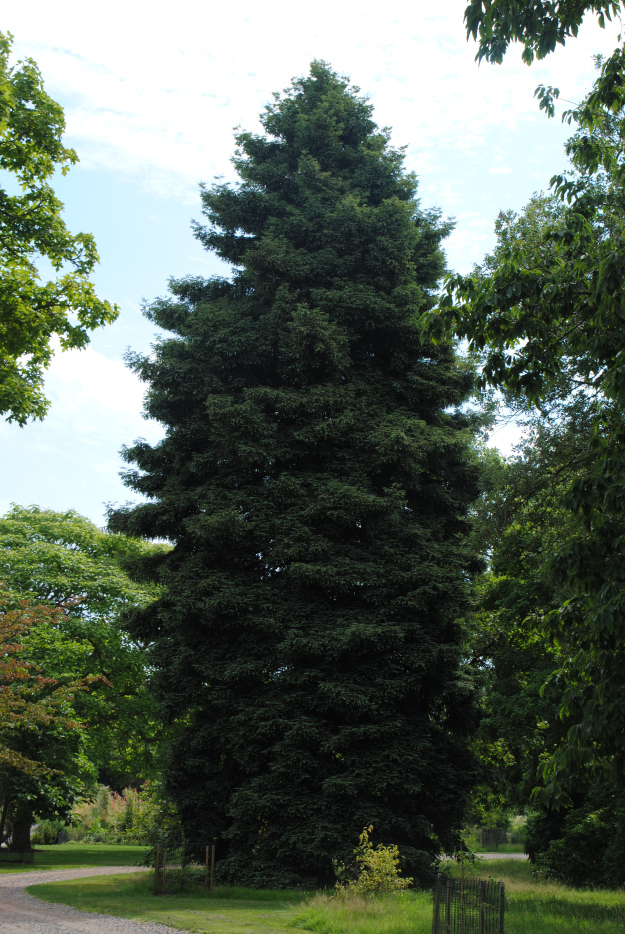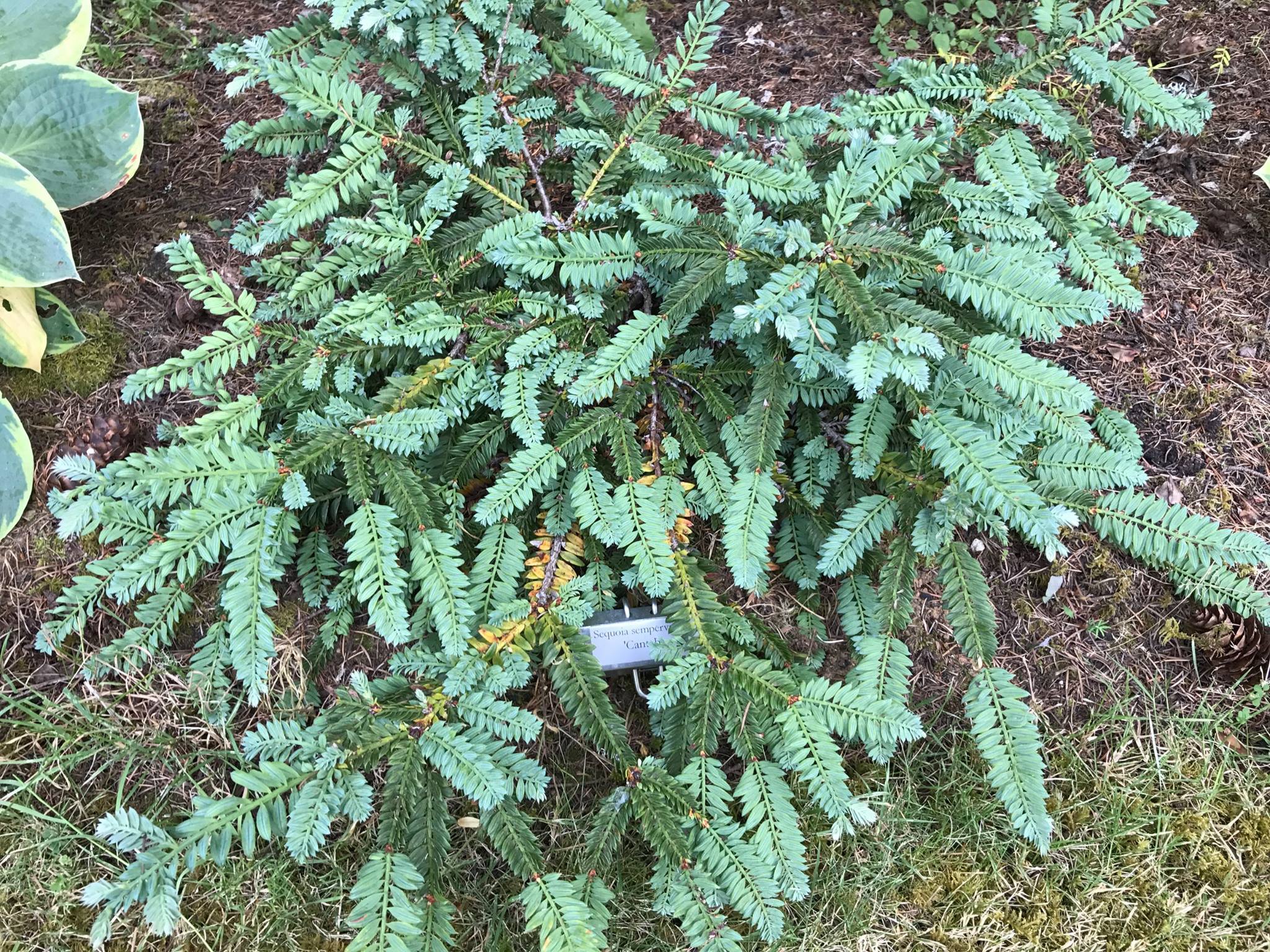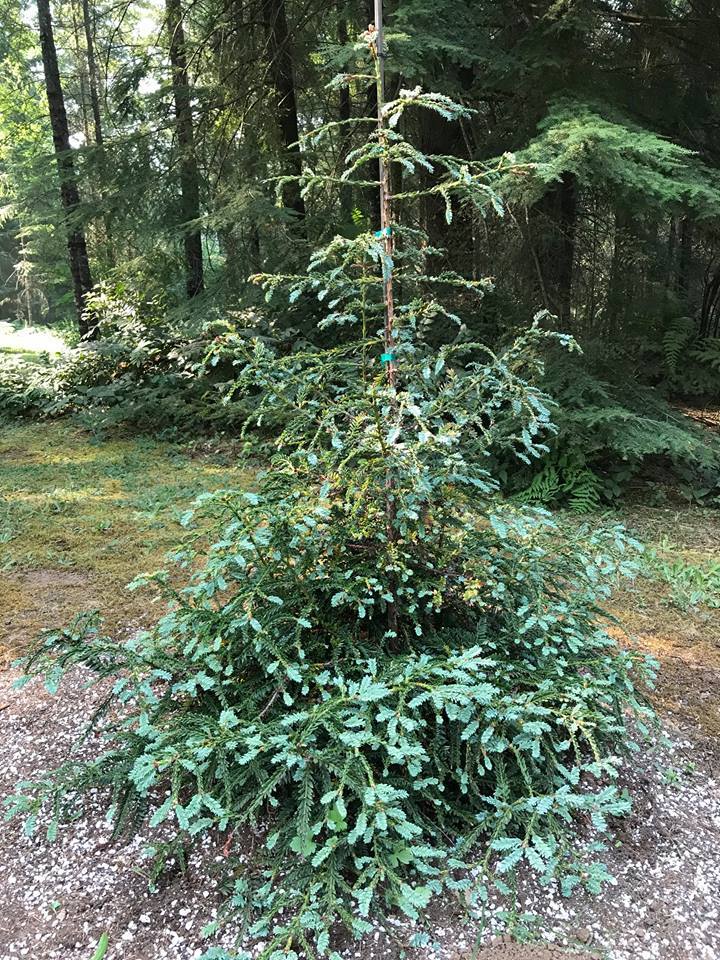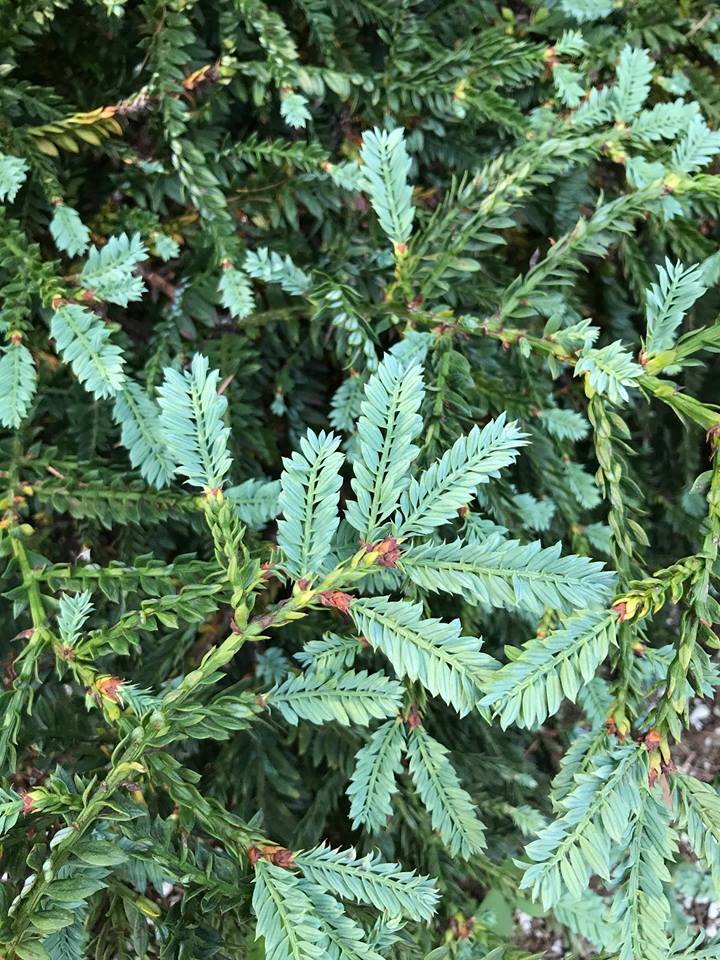Sequoia sempervirens 'Cantab' is a slow-growing, compact tree form of coast redwood with dense branching and unique, thick, fleshy needles, unlike any other in the species. Needles measure 0.5 inch (12 - 14 mm) long and 0.2 inch (4 - 5 mm) wide. After 10 years of growth, a mature specimen will measure 4.5 feet (1.5 m) tall and wide, an annual growth rate of 4 to 6 inches (10 - 15 cm).
'Cantab' is the name to be used for a reverted form of Sequoia sempervirens 'Prostrata'. The witch's broom that led to 'Prostrata' originated on a large, unnamed specimen of coast redwood with unique, thick, fleshy, blue-green needles that grows in cultivation on the grounds of Cambridge University Botanical Garden, United Kingdom. Although unnamed, this tree is actually the original 'Cantab', although for 50 years, nobody bothered to name it.
'Cantab was finally named in 1977 by Roy Lancaster of Cambridge University Botanic Garden, describing a reverted form of S. sempervirens 'Prostrata'. This reversion resulted from cuttings taken from the original witch's broom at Cambridge University Botanic Garden that created 'Prostrata'. In the 1970s, Mr. Lancaster sent cuttings to T Hilling & Co, a plant nursery in Surrey, UK. Rather than growing into the dome-like prostrate form of 'Prostrata' the cuttings grown at Hilling & Co. grew into tree form with loose, open branching. Cantab is short for Cantabridigian, which means "of Cambridge."



